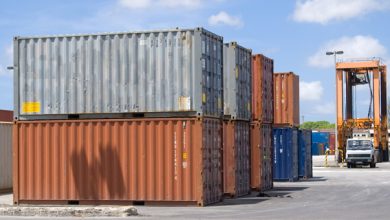
Operational efficiency is an essential word in the business world. It is directly related to the success of the business. It is no hidden secret that almost every business works on operational efficiency to enhance that the production efforts are rewarded.
One of the ways to improve the operational efficiency of any organization is to integrate a workforce management system. Such a system helps organizations streamline their resource planning and ensure maximum efficiency from the staff in terms of their quality, timeliness, and punctuality.
Having mentioned all of that, let’s now look at some important ways to measure and improve the operational efficiency of organizations. However, before we do that, let’s first know what operational efficiency means.
What Is Operational Efficiency?
Generally speaking, operational efficiency manages how well a company puts its resources to use to deliver its services and products. The more efficient business operations are, the fewer resources such as labor hours, money, and inventory are “wasted” while producing goods and services.
As a clarification, ‘waste’, in this situation, is any activity that adds expenses but doesn’t add value. There may be two types of ‘waste’ activities:
Ones that don’t add direct value but are still crucial for the company
Some activities that don’t add value or are useless for the organization
Understandably, any organization looking to grow and excel seeks ways to reduce resource and energy waste.
How to Measure Operational Efficiency?
While there isn’t a single unbeatable formula to measure an organization’s operational efficiency, gathering the necessary overview is one way.
You can measure operational efficiency by comparing the ratio of input to the output of organizational processes. Unfortunately, some common mistake such organizations make when measuring efficiency is taking only the input into account. For example, the costs and manhours required to produce a single unit. But this doesn’t show the whole picture.
Instead of this, you should consider the various performance indicators from the resource input and output point of view. While the indicators can be different between industries, they are:
-
Input
- Operational expenses – ongoing costs of running the business, its system, or products
- Capital expenses – money a company spends to buy, maintain its fixed assets, such as the building, vehicles, other equipment, or land
- Human resources used – headcount, including partners, hours worked
-
Output
- Revenue
- Customer numbers
- Product or service quality
- Business growth
- Customer satisfaction
Understandably, any organization could be interested in having the output generated exceed the production input. Moreover, the lower the input vs output ratio, the more efficiently an organization generates revenue.
Moving ahead with the metrics, you can use a formula to determine the operational efficiency ratio.
(Operating cost + Cost of sold goods) ÷ Net sales = Ratio of operational efficiency
- Operating expenses (OPEX) include things like sales and administrative expenses, salaries, office supplies, machine and system maintenance, and more
- Cost of goods sold (COGS) includes direct labor expenses, material costs, equipment repair and maintenance costs, production facilities rent, along with production staff salaries
- Net sales are calculated: Gross sales, less the returns, allowances, and the discounts
How You Can Improve Operational Efficiency
-
Consider Automation
Irrespective of whether your organization is in the IT sector or manufacturing, the administrative tasks take a lot of time and energy. While it won’t be wise to ditch all the administrative tasks, automation is a way to spend less time on mundane tasks.
In recent times, nearly every repetitive task within the business sector can be automated. There is a great variety of software and tools available. With a little digging, you can be certain of finding a perfect match for your needs.
Begin with simple things, like automated invoicing, emails, payroll, push notifications, and check how it saves time and energy.
-
Get Rid of Bottleneck
Another hurdle that messes up operational efficiency in your organization is the process bottleneck. It is a stage of work that gets more requests than it can process while operating at the maximum capacity. This results in delays and costs your company more money than estimated.
The primary step in doing away with bottlenecks is identifying them. Honestly, it is the trickiest part. But if you notice a certain unpredictability within the organization’s workflow, it is the first indication that you may have a bottleneck somewhere in the workflow. It can be an inefficient collaboration, a lack of tools, or even poor workforce management. To identify where the bottleneck is, you have to use several techniques. Some examples of this are the five ‘whys’ method, process mapping, and many more.
Moreover, even a workforce management system can help identify the bottleneck.
-
Focus on Employee Training
In a fast-paced world, best practices evolve very rapidly. As a result, your employees may not always have access to some effective work methods. And that, in turn, can impact the efficiency of operations.
As a manager, your job is to provide workers with access to regular training and ensure they are updated on using the systems in place at your company.
Mentoring and coaching programs are also a good investment in employee effectiveness and productivity, especially for entry-level positions. Newcomers may be very enthusiastic but lack the required knowledge. So, supporting and guiding them can be a great way to boost their work performance.
Another effective way of improving the operational efficiency of your organization is reviewing and changing the company culture. It is very important to consider that overworked staff cannot deliver the best of their performance. After all, every employee has limitations regarding their working capacity.
You should consider re-evaluating your organization’s culture in the following way.
- Support the well-being of your employees
- Give your employees ample time and leaves to take a rest
- Encourage the employees to have a healthy balance of work-life
Maintaining a healthy company culture can enhance your organizational efficiency to a great extent
Measuring the efficiency of the operation at your company and analyzing the results takes time and energy and a bit of the workforce management system tool. Nevertheless, it is a necessary task for any growing business. However, improving operational efficiency isn’t just about cutting costs. It is about reviewing how the work at the organization is done and exploring its culture, structure, and policies along the way.
Moreover, the impacts of more efficient operations at an organization extend beyond just money-saving. Staff performance also benefits from a more organized working environment – they are likely to become more productive and engaged and deliver better results.
From a management perspective, running an organization that doesn’t require fighting fires but operates smoothly instead allows focusing on organizational growth and implementing strategy.





